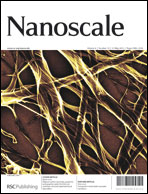Fabrication of intrinsically fluorescent porous nanocarriers that are simultaneously stable in aqueous solutions and photostable is critical for their application in drug delivery and optical imaging but remains a challenge. In this study, fluorescent porous zinc sulfide nanospheres were synthesized by a facile gum arabic-assisted hydrothermal procedure. The morphology, composition and properties of the nanospheres have been characterized by field-emission scanning electron microscopy, transmission electron microscopy, X-ray powder diffraction, N2 adsorption-desorption analysis, thermal gravimetric analysis, fourier transform infrared spectrograph, optical measurement, dynamic light scattering, and cytotoxicity assay. They exhibit larger surface area, excellent colloidal stability, photostable fluorescent signals, and good biocompatibility, which makes them promising hosts for drug delivery and cellular imaging. The fluorescent dye safranine-T was employed as a drug model and loaded into the porous nanospheres, which were delivered to human cervical cancer HeLa cells in vitro for live cell imaging.

You have access to this article
 Please wait while we load your content...
Something went wrong. Try again?
Please wait while we load your content...
Something went wrong. Try again?


 Please wait while we load your content...
Please wait while we load your content...